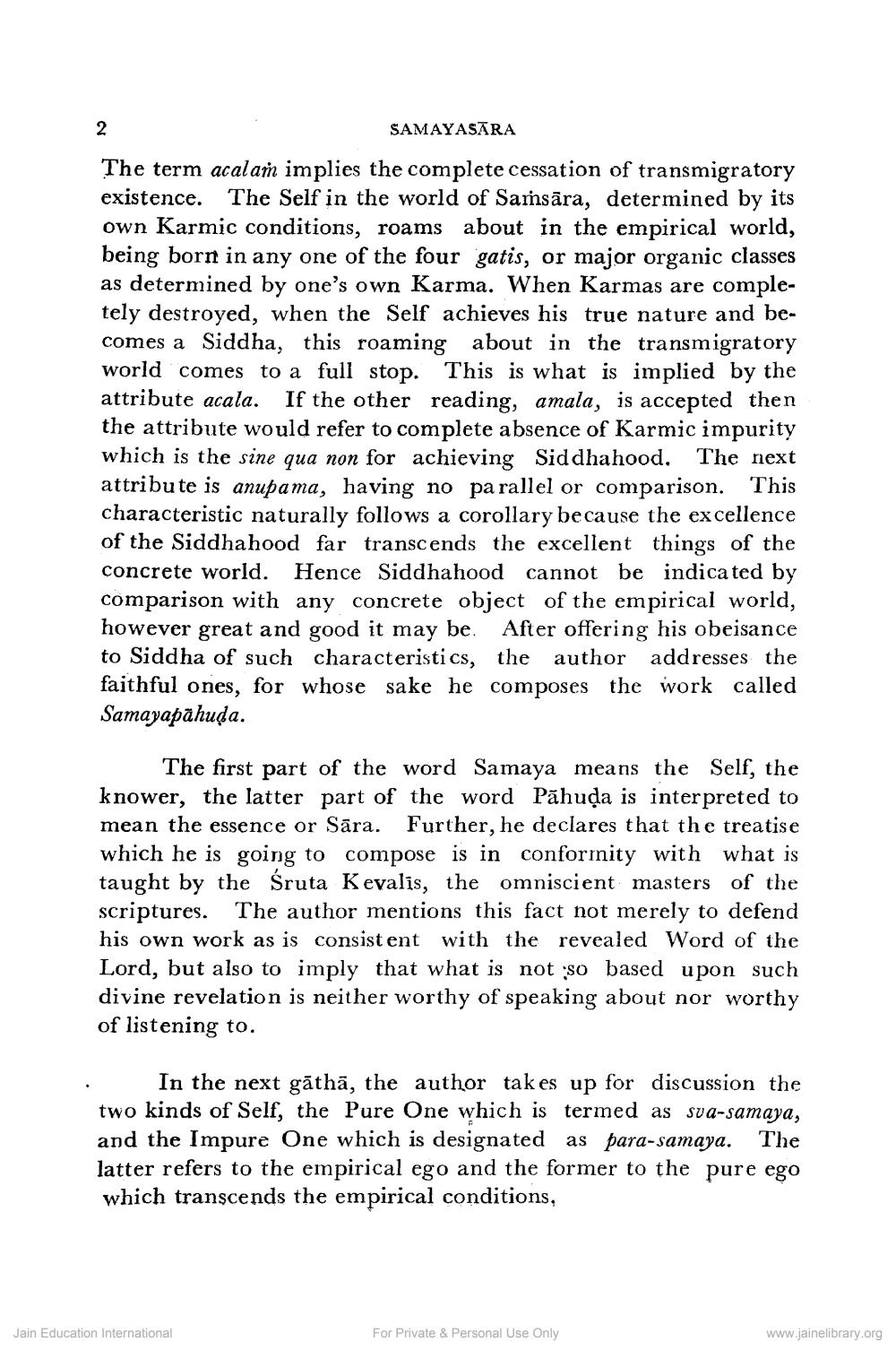________________
SAMAYASĀRA
The term acalaṁ implies the complete cessation of transmigratory existence. The Self in the world of Samsāra, determined by its own Karmic conditions, roams about in the empirical world, being born in any one of the four gatis, or major organic classes as determined by one's own Karma. When Karmas are completely destroyed, when the Self achieves his true nature and becomes a Siddha, this roaming about in the transmigratory world comes to a full stop. This is what is implied by the attribute acala. If the other reading, amala, is accepted then the attribute would refer to complete absence of Karmic impurity which is the sine qua non for achieving Siddhahood. The next attribute is anupama, having no pa rallel or comparison. This characteristic naturally follows a corollary because the excellence of the Siddhahood far transcends the excellent things of the concrete world. Hence Siddhahood cannot be indicated by comparison with any concrete object of the empirical world, however great and good it may be. After offering his obeisance to Siddha of such characteristics, the author addresses the faithful ones, for whose sake he composes the work called Samayapāhuda.
The first part of the word Samaya means the Self, the knower, the latter part of the word Pāhuda is interpreted to mean the essence or Sāra. Further, he declares that the treatise which he is going to compose is in conforrnity with what is taught by the Śruta Kevalis, the omniscient masters of the scriptures. The author mentions this fact not merely to defend his own work as is consistent with the revealed Word of the Lord, but also to imply that what is not so based upon such divine revelation is neither worthy of speaking about nor worthy of listening to.
In the next gāthā, the author takes up for discussion the two kinds of Self, the Pure One which is termed as sva-samaya, and the Impure One which is designated as para-samaya. The latter refers to the empirical ego and the former to the pure ego which transcends the empirical conditions,
Jain Education International
For Private & Personal Use Only
www.jainelibrary.org




